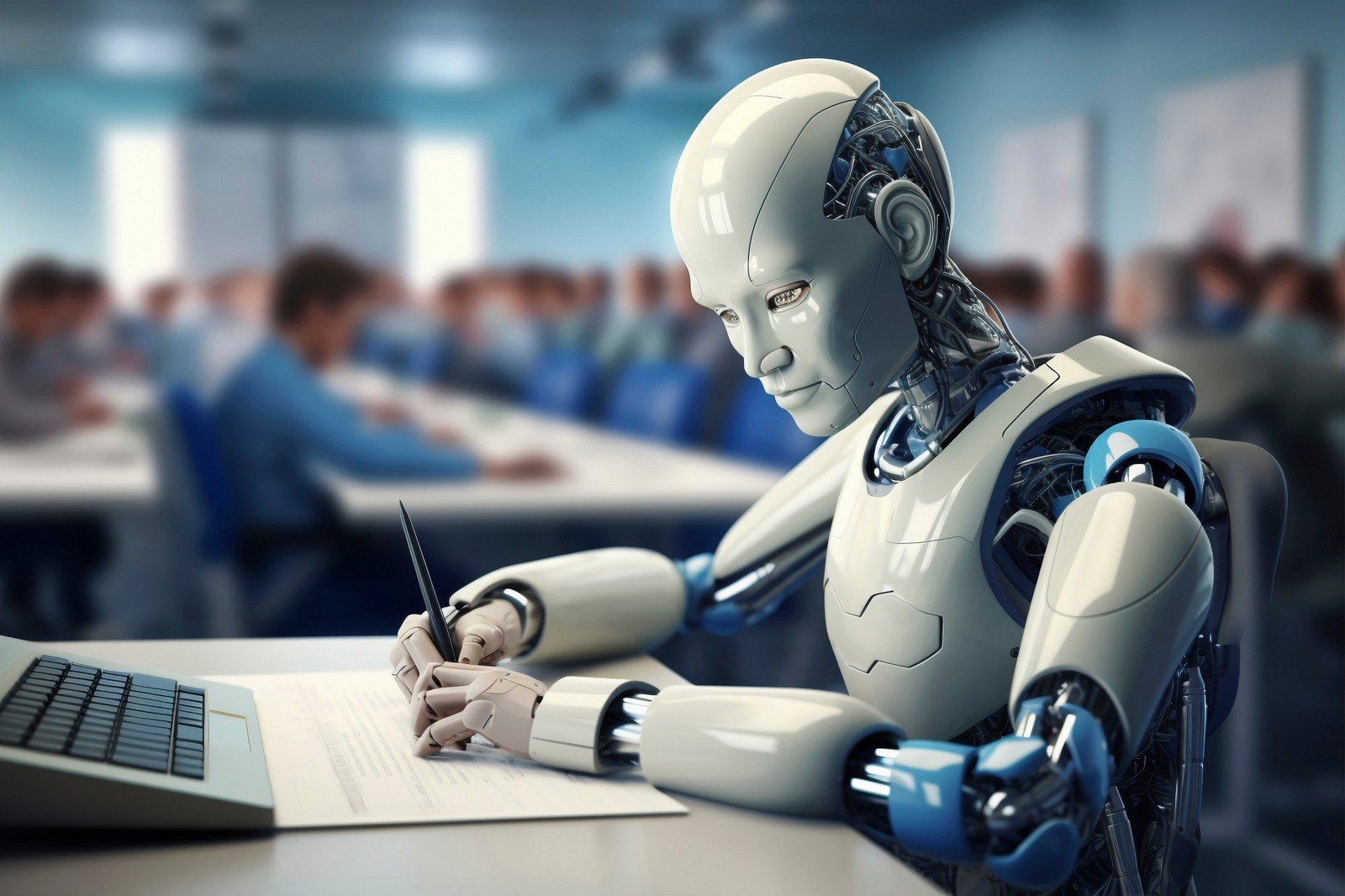Machine Learning (ML)

Quick Navigation:
- Machine Learning Definition
- Machine Learning Explained Easy
- Machine Learning Origin
- Machine Learning Etymology
- Machine Learning Usage Trends
- Machine Learning Usage
- Machine Learning Examples in Context
- Machine Learning FAQ
- Machine Learning Related Words
Machine Learning Definition
Machine Learning (ML) is a branch of artificial intelligence (AI) focused on building systems that can learn and make decisions from data. Unlike traditional programs that follow explicit instructions, ML algorithms use statistical methods to identify patterns and improve their performance over time. ML can be supervised (trained with labeled data), unsupervised (finding patterns without explicit labels), or reinforced (learning through trial and error). The core idea is to enable computers to adapt and learn from experience without human intervention.
Machine Learning Explained Easy
Imagine you have a robot that wants to play soccer. At first, it doesn’t know what to do and makes mistakes, like kicking the ball in the wrong direction. But every time it tries, it learns what works and what doesn’t. The more it plays, the better it becomes. Machine Learning is like that robot learning from its experiences to make better decisions.
Machine Learning Origin
The concept of Machine Learning began to take shape in the mid-20th century when the idea of computers mimicking human learning was explored. The development was influenced by early neural networks in the 1950s and the evolution of statistical models in the 1980s and 1990s. The boom in data availability and processing power in the 2000s further accelerated advancements, making ML a crucial technology in various industries.
Machine Learning Etymology
The term “Machine Learning” combines the words ‘machine’, indicating computers or mechanical systems, and ‘learning’, referring to acquiring knowledge or skill through study and experience. It underscores the idea of computers autonomously improving their problem-solving abilities.
Machine Learning Usage Trends
Machine Learning has seen a significant surge in usage since the early 2010s, driven by big data, enhanced computational power, and the integration of AI into numerous sectors. Its applications range from healthcare diagnostics, predictive maintenance, and fraud detection to voice recognition, personalized recommendations, and self-driving cars. The trend is continuing to rise as more industries realize the value of data-driven insights.
Machine Learning Usage
- Formal/Technical Tagging: AI, data-driven, algorithm, model, training, prediction, pattern recognition.
- Typical Collocations: machine learning model, supervised learning, training data, predictive analysis, algorithm development.
Machine Learning Examples in Context
- “The company used a Machine Learning algorithm to predict customer preferences, enhancing its recommendation engine.”
- “Machine Learning is transforming the field of healthcare by helping doctors make data-driven decisions for better patient outcomes.”
- “With advancements in Machine Learning, self-driving cars can now navigate complex road conditions with greater accuracy.”
Machine Learning FAQ
- What is Machine Learning?
Machine Learning is a type of artificial intelligence that allows computers to learn and make decisions based on data. - How does Machine Learning differ from traditional programming?
Traditional programming follows explicit rules, while Machine Learning develops its own patterns and solutions based on data analysis. - What are the main types of Machine Learning?
Supervised, unsupervised, and reinforcement learning are the main types. - Is Machine Learning the same as AI?
Machine Learning is a subset of AI, which focuses on enabling machines to learn from data. - What is the purpose of training data?
Training data helps ML algorithms learn patterns and make predictions. - Can Machine Learning make mistakes?
Yes, like humans, ML can make mistakes, especially when training data is flawed or insufficient. - Why is Machine Learning important?
It allows systems to adapt and improve over time, enabling better decision-making in complex environments. - What are some applications of Machine Learning?
Applications include spam detection, recommendation systems, voice assistants, and medical diagnostics. - How long does it take to train a Machine Learning model?
It varies widely based on data size, model complexity, and computational resources, from minutes to days. - What is overfitting in Machine Learning?
Overfitting occurs when a model learns the training data too well and performs poorly on new, unseen data.
Machine Learning Related Words
- Categories/Topics: Artificial intelligence, data science, computational algorithms.
- Word Families: Learning, algorithm, model, neural.
Did you know?
Machine Learning was crucial in detecting gravitational waves for the first time in 2015. The use of ML algorithms helped analyze massive amounts of data generated by the Laser Interferometer Gravitational-Wave Observatory (LIGO), enabling the identification of ripples in spacetime caused by merging black holes. This discovery validated Einstein’s century-old theory and marked a milestone in both astrophysics and data science.
PicDictionary.com is an online dictionary in pictures. If you have questions or suggestions, please reach out to us on WhatsApp or Twitter.Authors | Arjun Vishnu | @ArjunAndVishnu

I am Vishnu. I like AI, Linux, Single Board Computers, and Cloud Computing. I create the web & video content, and I also write for popular websites.
My younger brother, Arjun handles image & video editing. Together, we run a YouTube Channel that's focused on reviewing gadgets and explaining technology.



Comments powered by CComment